Free UK delivery when you spend over £30
Free UK delivery when you spend over £30
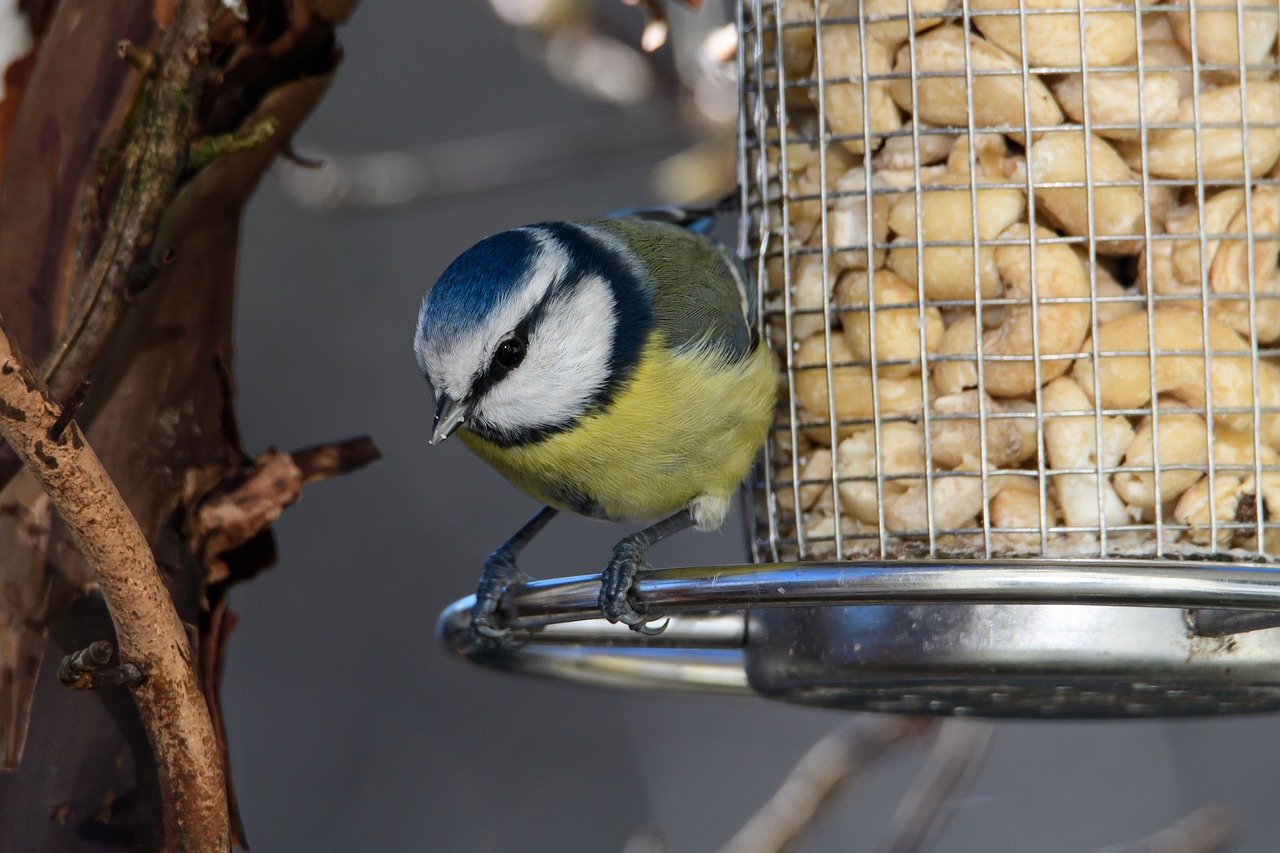
Attracting wild birds to your feeders is a great source of enjoyment for nature lovers in the UK. While helping the birds get all the nutritious food they might need, you’ll also be rewarded with seeing all the beautiful winged friends that visit your garden.
Bird spotting doesn’t have to be a difficult hobby and the rise in popularity of it over recent years has highlighted this. Inviting all sorts of wild bird species to your garden throughout the year can give you a great opportunity to witness first hand the beauty of nature. To help you on your bird spotting, we’ve put together a list of the most common UK wild garden birds, with tips on how to identify them. Even though rare birds are difficult to bring in, you may have seen some of this list we’ve compiled for you.
Magpies are part of the crow family and are mainly scavengers that love to eat garden pests. From a distance they look to have a plain black and white plumage with a long tail. Get a little closer and you’ll see a purple-blue iridescent sheen to their wing feathers. Their tails also have a green gloss when in the right light.
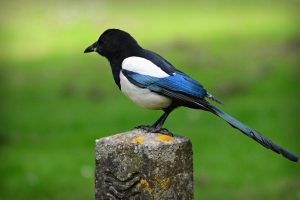
Image by 👀 Mabel Amber, who will one day from Pixabay
Chaffinches are of a similar size to a sparrow that predominantly enjoy feeding on seed mixes on the ground. Male chaffinches can be identified by their pink breast and blue-grey crown. Whereas females are a less bright brown with black and white wing bars.
These birds are one of the most common across the UK and you may hear their loud song before you spot them.
Possibly the UK’s favourite bird, if Christmas cards are anything to go by. Easy to identify due to their red breast, white belly and brown back; males and females are both coloured the same.
Robins enjoy sunflower hearts and mealworms, but beware they can be fiercely territorial!
Found in woodlands, parks and gardens across the UK, the great tit is the largest in the tit family. You can spot one due to its green and yellow body, glossy black head and white cheeks. Keep an ear out for their two-syllable song too.
The great tit likes to eat most things, but is particularly partial to sunflower hearts and whole shelled peanuts.
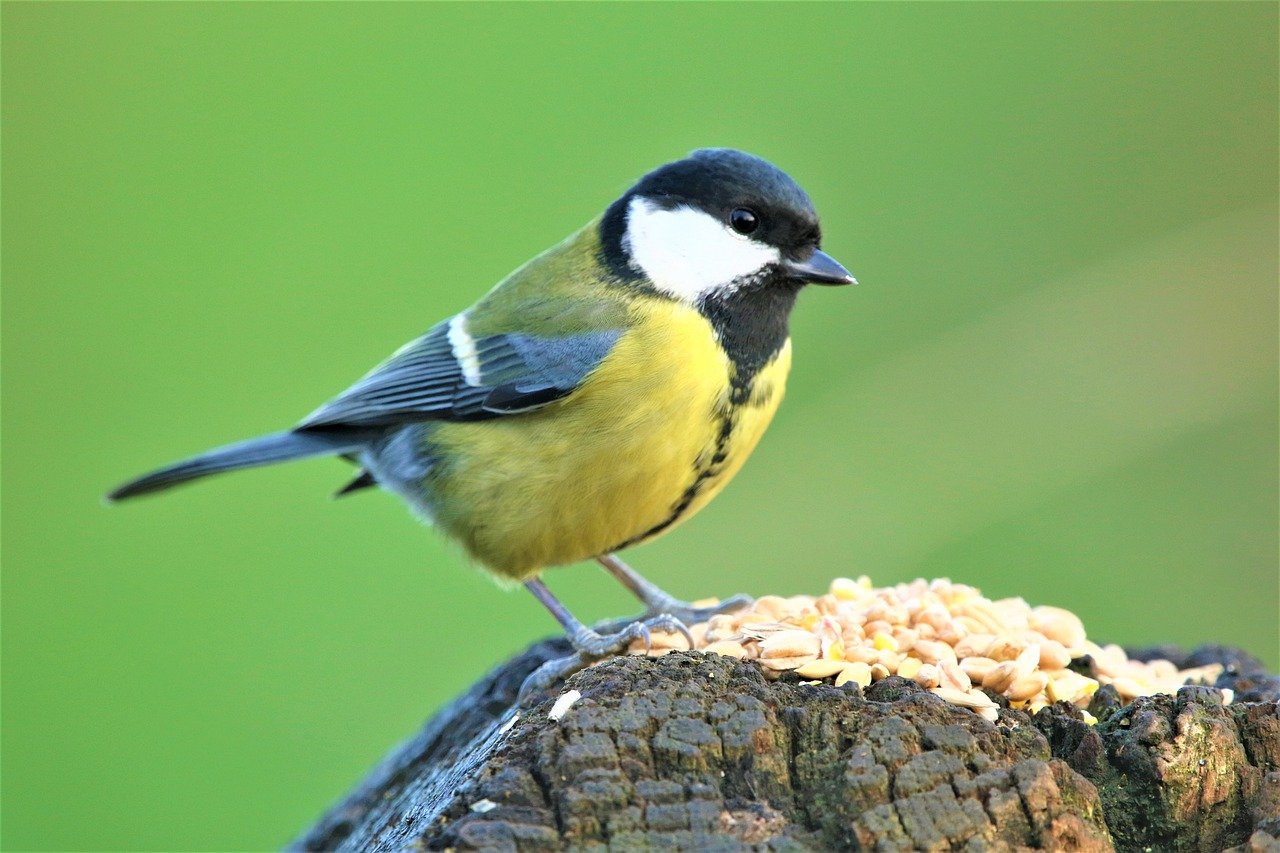
Image by David Reed from Pixabay
Goldfinches are beautiful birds with golden backs, yellow flashes on their wings and bright red faces. They migrate as far south as Spain, yet they also love visiting gardens in search of food. Try putting out niger seeds to attract goldfinches, although you will need a special feeder to stop the seed falling out.
The Wood Pigeon is the most widespread of Britain’s pigeons and considered a pest by many farmers for the damage it creates to agricultural crops. You can identify Wood Pigeons by their grey bodies with hints of pink/purple and white patches on the neck and wings. They have thin beaks that are either black, brown or even orange.
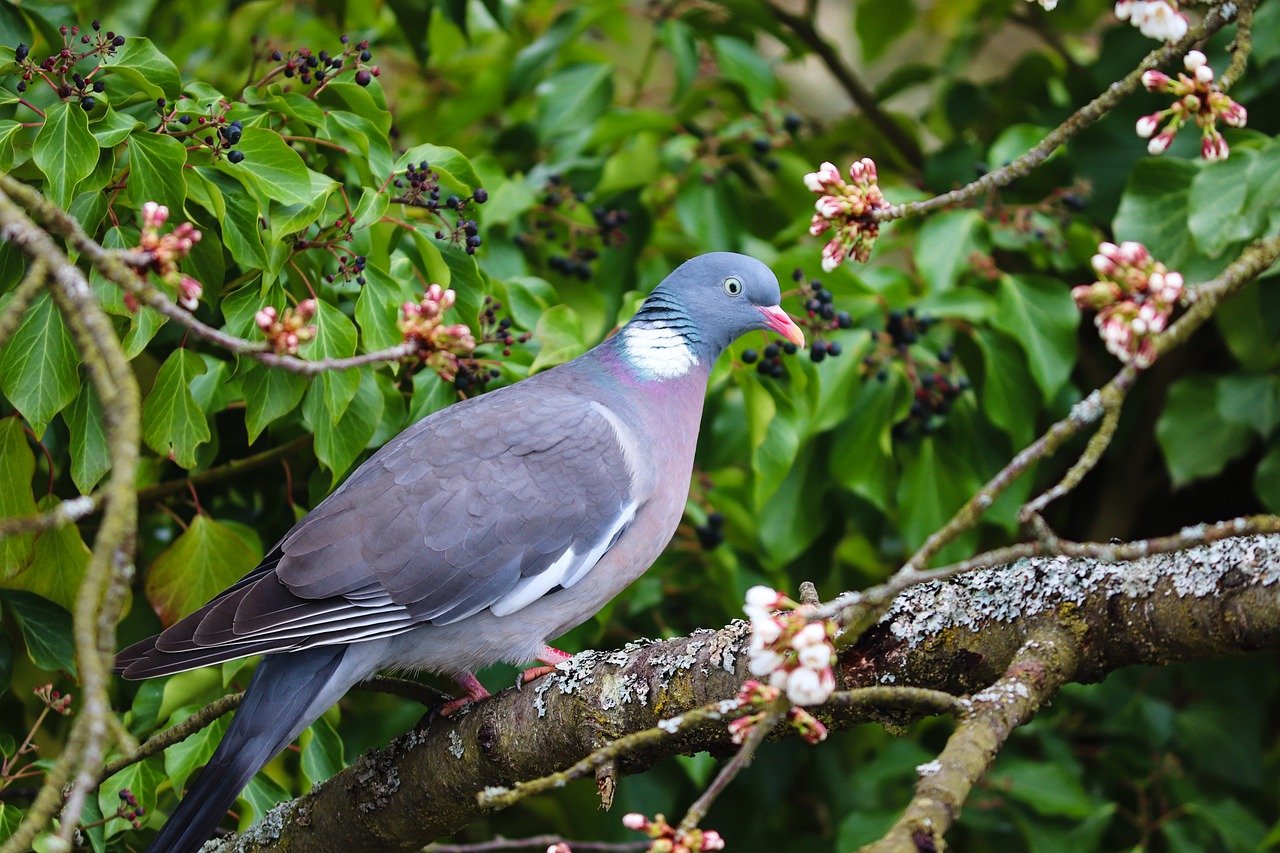
Image by Manfred Richter from Pixabay
The clue to spotting blackbirds is in their name – when it comes to the males that is. Males are black with a yellow beak and females are dark brown, but both have a yellow/orange ring around the eye.
Blackbirds are ground feeders, bouncing underneath feeders picking up dropped seeds and are possibly the most common garden visitor.
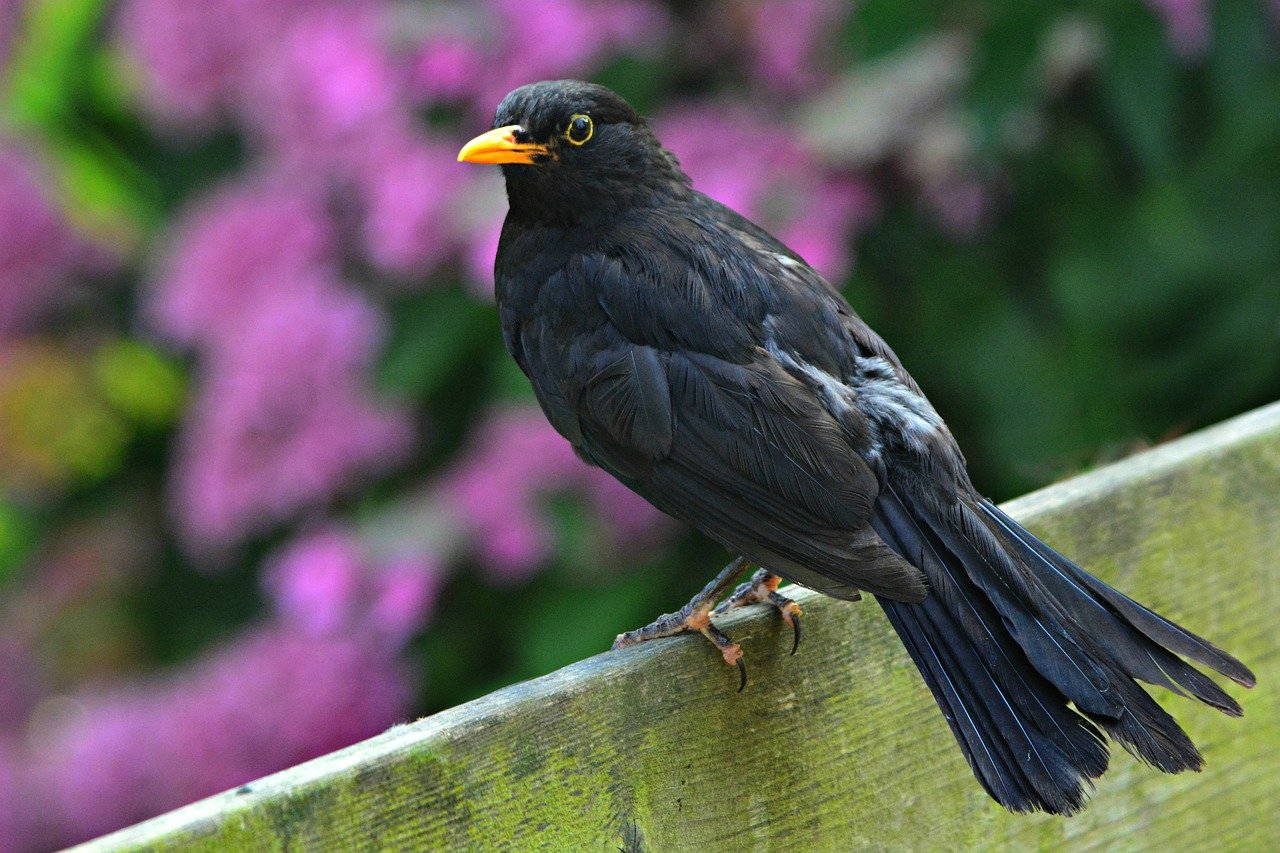
Image by 👀 Mabel Amber, who will one day from Pixabay
A short and thin black bill with easily recognisable blue cap and vibrant yellow breast. These beautiful little birds have simple tastes and are happy to visit your garden for whole shelled peanuts, sunflower hearts and fat balls.
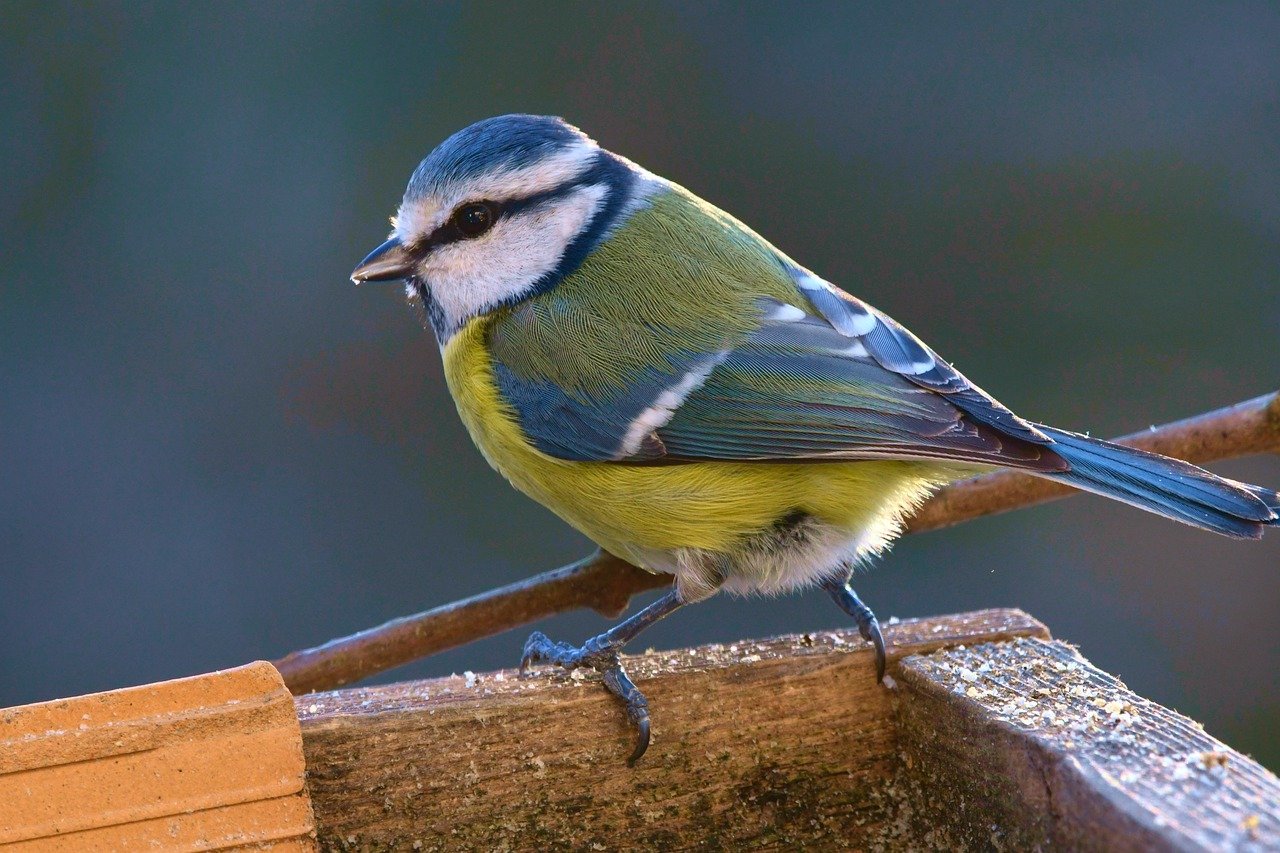
Image by Federico Maderno from Pixabay
Starling populations are in decline, but they can be found across all of the UK except for the very highest of the Scottish Highlands. They’re roughly the size of a blackbird but with shorter tails and long thin bills. Easily distinguishable by their shimmering purple-green feathers covered in yellow-white spots.
Despite being possibly the most commonly sighted bird in the UK, the house sparrow has been in decline since the 1970s. A potential reason for this decline is a lack of food, so keeping your feeders stocked could very well help this species. They like to eat peanuts and small seed mixes with millet.
Males have grey crowns, white cheeks, a black bib and a chestnut neck. Females are predominantly brown with black and brown stripes on their backs.
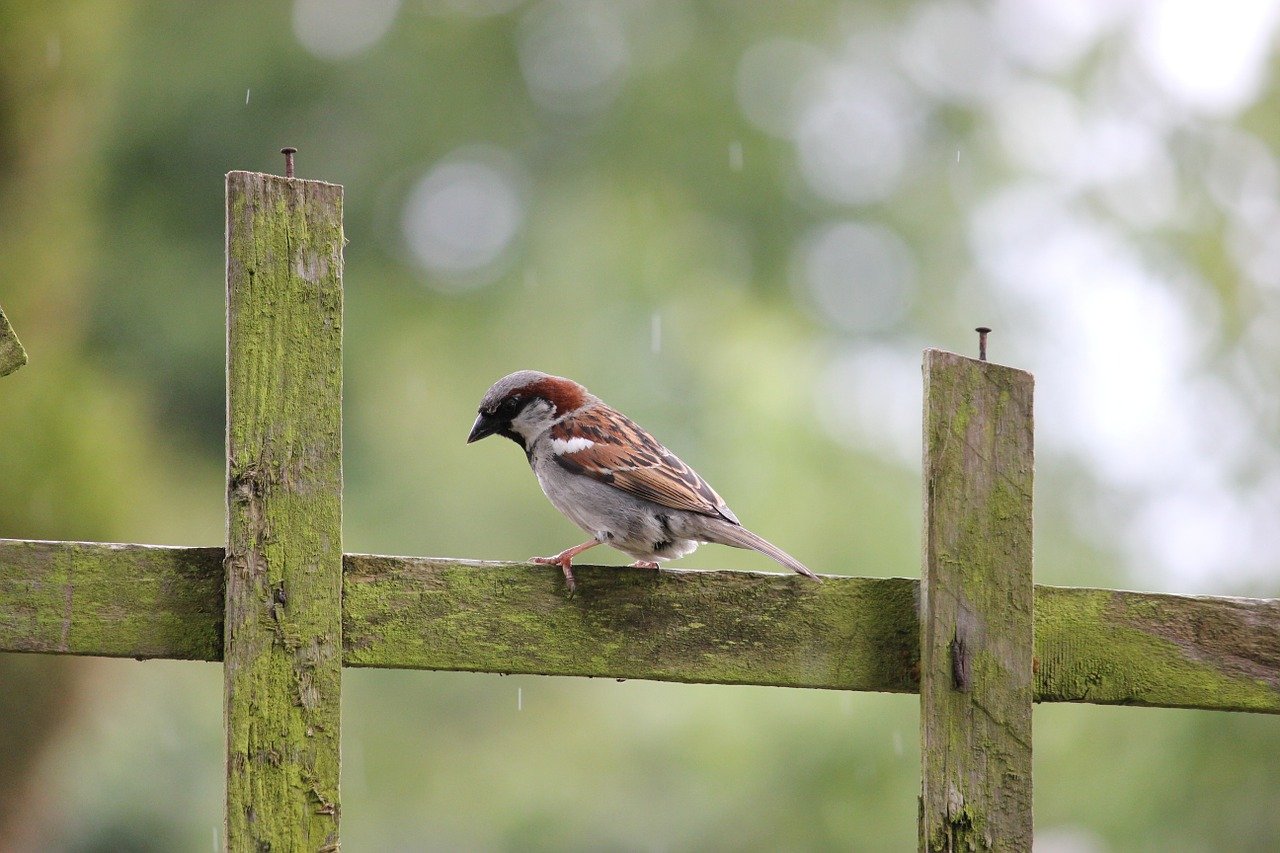
Image by PublicDomainPictures from Pixabay
